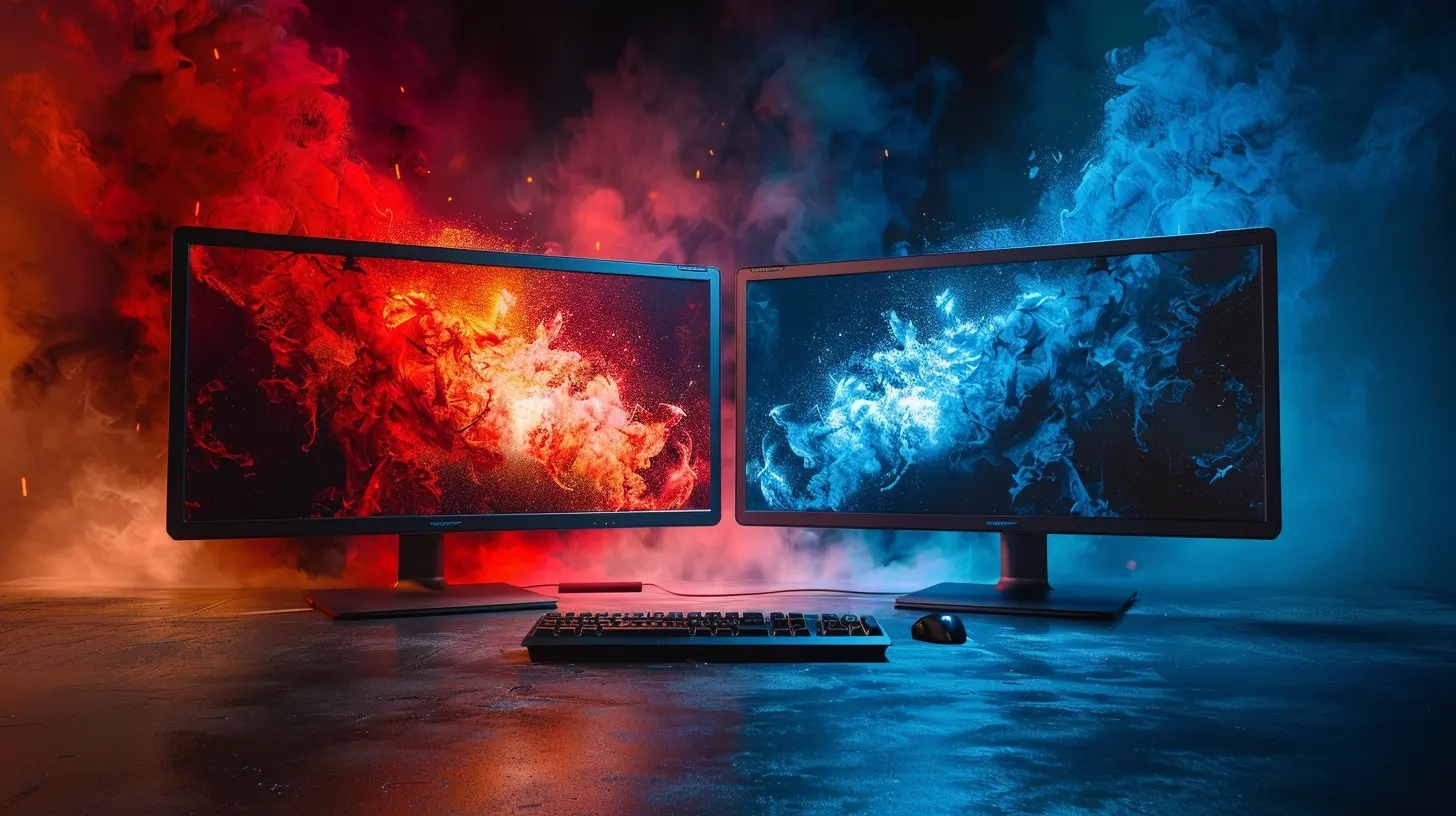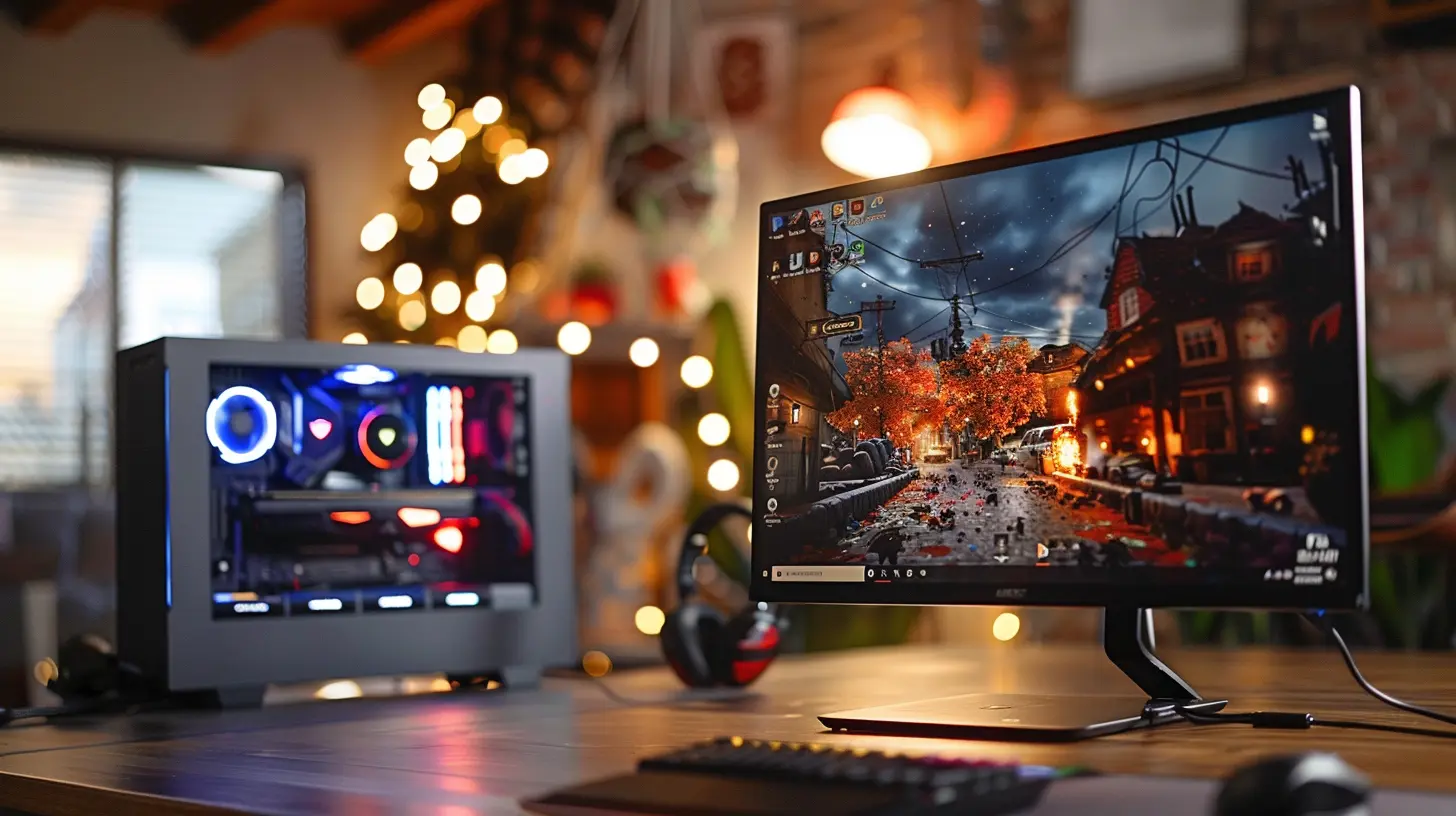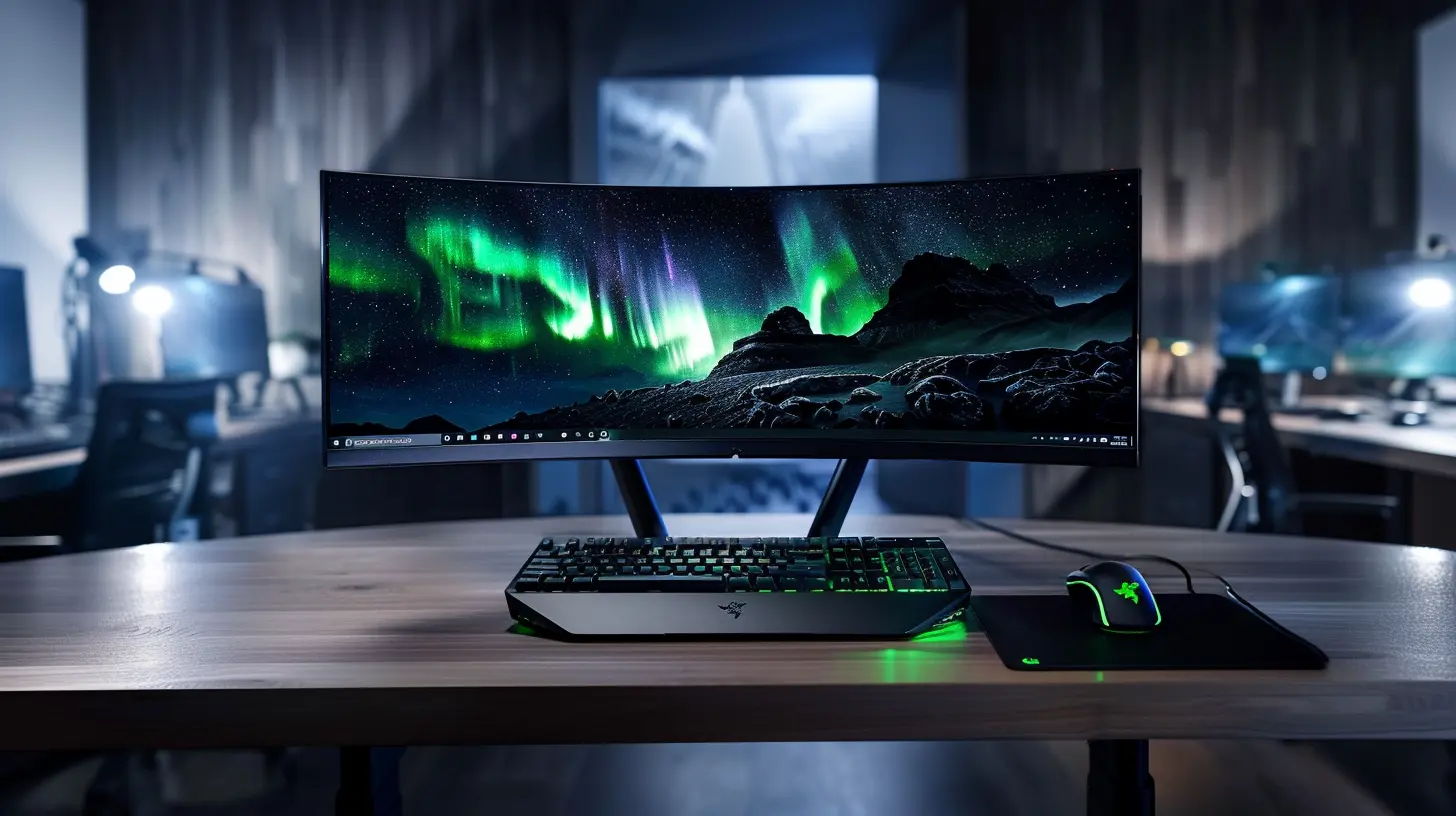8 March 2025
Picture this: you’re deep into an intense gaming session, your character is on the brink of victory, adrenaline is coursing through your veins—and then BAM—your screen tears or stutters, throwing you completely off your game. Frustrating, right? That’s the kind of nightmare no gamer wants. That’s where technologies like G-Sync and FreeSync come swooping in like gaming superheroes.
But wait, what are they? How do they differ? And most importantly, which one should YOU choose? Don’t worry, I’ve got you covered. Pull up a chair, grab some snacks, and let’s dive into the ultimate showdown of G-Sync vs FreeSync—in a way that’ll make even the most confusing tech terms sound friendly. 
What’s the Deal with Screen Tearing and Stuttering?
Before we get into the nitty-gritty of G-Sync and FreeSync, let’s take a quick detour to understand why these technologies exist in the first place.When you’re gaming, your graphics card renders frames at a certain speed (frames per second or FPS). Your monitor, on the other hand, has its own refresh rate (how many times it updates the screen per second). If these two aren’t perfectly in sync, you get screen tearing (when parts of two frames overlap and make it look like your game world is having a nervous breakdown) or stuttering (when your frames are unevenly delivered, making the action choppier than a poorly edited action film).
Think of it like dancing with a partner who’s off-beat. G-Sync and FreeSync are here to be the DJ, making sure your FPS and refresh rate groove together like Fred Astaire and Ginger Rogers. 
G-Sync: NVIDIA’s Premium Solution
First up, let’s talk G-Sync. Developed by NVIDIA, this technology is like the luxury sports car of adaptive sync. It’s designed to provide buttery-smooth gameplay by eliminating tearing, stuttering, and input lag. Sounds dreamy, right?Here’s how it works: NVIDIA integrates a specialized hardware module into G-Sync-compatible monitors. This module communicates directly with your NVIDIA GPU to perfectly match your monitor’s refresh rate with your GPU’s frame output.
The Upsides of G-Sync
- Flawless Performance: G-Sync ensures that everything is in perfect harmony. It’s like having a personal gaming butler catering to your every whim.- Variable Overdrive: This minimizes ghosting (that annoying trail effect behind fast-moving objects) by dynamically adjusting monitor pixel response times.
- High Standards: NVIDIA certifies G-Sync monitors rigorously. You know you’re getting a product that’s been put through its paces.
The Downsides of G-Sync
But (yeah, there’s a but), it’s not all sunshine and rainbows:- Pricey Affair: G-Sync monitors often come with a hefty price tag, thanks to that built-in hardware module.
- Limited Compatibility: It’s an NVIDIA-exclusive club. If you’re rocking an AMD GPU, forget about using G-Sync.

FreeSync: AMD’s Friendly Alternative
Now let’s meet FreeSync, AMD’s answer to adaptive sync technology. Instead of requiring expensive hardware, FreeSync is based on the open-source Adaptive-Sync standard, which means more monitor manufacturers can support it, typically at a lower cost.FreeSync doesn’t need any fancy hardware modules—it uses software and your GPU’s power to sync the refresh rate with frame output. And don’t worry, FreeSync isn’t some budget knockoff. With multiple tiers like FreeSync, FreeSync Premium, and FreeSync Premium Pro, you can scale up depending on your needs and budget.
The Upsides of FreeSync
- Affordable Options: FreeSync monitors are typically easier on the wallet, which is great for gamers looking for solid performance without breaking the bank.- Wider Compatibility: While it’s built with AMD GPUs in mind, FreeSync is also compatible with some NVIDIA cards. (Yeah, even rival tech plays nice sometimes.)
- Flexibility: Since FreeSync is based on the Adaptive-Sync standard, there’s a wider selection of monitors to choose from.
The Downsides of FreeSync
Of course, FreeSync has a few quirks:- Inconsistent Quality: Because it’s open standard, the quality of FreeSync monitors can vary. Some might be awesome, while others... not so much. Check reviews before you buy!
- Premium Features May Cost More: Want a FreeSync Premium Pro monitor with HDR support? Be ready to pay a bit extra.

G-Sync vs FreeSync: Putting Them Head to Head
So, let’s break it down even further. Here’s how G-Sync and FreeSync stack up in some key areas:1. Price
Let’s be real—budget is a big factor for most of us. G-Sync monitors are generally more expensive since they include that magical NVIDIA hardware module. FreeSync monitors, by contrast, are the better choice if you’re gaming on a budget.2. Compatibility
If you’re locked into the NVIDIA ecosystem, G-Sync is a no-brainer. But if you’re an AMD fan (or you just want more flexibility), FreeSync wins the compatibility game. Plus, some FreeSync monitors now work with NVIDIA GPUs, so you’re not entirely boxed in.3. Performance
Now, here’s where it gets tricky. G-Sync is the Rolls Royce of adaptive sync—it’s incredibly polished and rarely falters. FreeSync can also deliver an awesome experience, but you have to pick the right monitor. FreeSync Premium and Premium Pro models tend to be on par with G-Sync.4. HDR Support
Both G-Sync and FreeSync Premium Pro support HDR (High Dynamic Range) for more vibrant colors and better contrast. If you want your games to pop like a fireworks display, this is something to keep in mind.Which One Should YOU Choose?
Alright, here’s the golden question: should you go with G-Sync or FreeSync? Well, the answer depends on you. (Surprise, surprise!)- Team NVIDIA? If you already have an NVIDIA GPU and you’re willing to spend a bit more, G-Sync will give you an unparalleled gaming experience. It’s premium for a reason.
- Team AMD? If you rock an AMD GPU, go for FreeSync. It’s often cheaper, and you’ll have plenty of models to choose from.
- On a Budget? FreeSync all the way. Even if you have an NVIDIA card, you can look for a FreeSync-compatible monitor and save some cash.
- HDR Fiend? Either G-Sync HDR or FreeSync Premium Pro will scratch that itch for jaw-dropping visuals.
Ultimately, it’s like choosing between chocolate and vanilla ice cream. Both are great—just pick what suits your taste (and wallet).
A Few Things to Keep in Mind
Before you rush out to hit that “Buy Now” button, remember these quick tips:1. Match Your Monitor to Your GPU: Double-check your GPU (NVIDIA or AMD) and ensure your monitor’s sync tech is compatible.
2. Monitor Refresh Rate Matters: A 144Hz monitor with adaptive sync will give you a smoother experience than a 60Hz monitor, no matter the tech.
3. Read Reviews: As with all tech products, not all G-Sync or FreeSync monitors are created equal. Do a little homework to make sure you’re getting the best bang for your buck.
Final Thoughts
In the epic battle of G-Sync vs FreeSync, there’s no definitive winner because it all boils down to YOUR needs as a gamer. Whether you’re chasing silky-smooth visuals, sticking to a slim budget, or staying loyal to your GPU brand, both technologies have something fantastic to offer.So, pick the one that makes the most sense for you and get ready to dive into a world of smoother, tear-free gaming bliss. After all, life’s too short for screen tearing and stuttering—your gaming adventures deserve better than that!







Rocco McTier
Great article! It's so helpful to understand the differences between G-Sync and FreeSync. Finding the right technology can truly enhance our gaming experience. Thank you!
March 31, 2025 at 2:52 PM